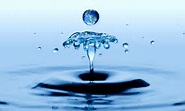







The Three-Week Internal Protocol - Hydrosols
In the three-week protocol, thirty milliliters (two tablespoons) of hydrosol dissolved in one litre of distilled water or spring water is to be consumed throughout the day. This is repeated daily for twenty-one days, then stopped for seven days. [one table spoon] of hydrosols, not thirty.]
This protocol is most useful when addressing specific health concerns and issues of a constitutional nature. For instance, lymphatic congestion that is causing swollen lymph nodes could be treated with a three-week protocol of bay laurel. If the swelling in the nodes disappears in the first few days, it is still worth continuing the treatment, as this helps create an environment in which the symptoms are less likely to reoccur.
However, if the nodes are still clear after the seven days off, you would know that you do not need to resume the treatment. A constitutional predisposition to asthma attacks in stressful conditions could also be treated with the three -week protocol. In this case we would aim not at dealing with the asthma but treating a stress response.
Hydrosols of lemon balm, saint John's wort, and neroli are a few options; they could be combined or used individually. If the body is less likely to become stressed, then the attacks are less likely to happen. This also helps break the learned stress response.
If a certain situation no longer stresses you during the three weeks you are consuming the hydrosol, it is less likely to stress you in the future. In this case the week off would determine whether another three-week cycle should be undertaken based on the reoccurrence of the asthma attacks.
Reference: Hydrosols: The New Aromatherapy: Suzanne Catty
Articles - Most Read
- Home
- What are Hydrosols
- What are Hydrosols-2
- The Monographs
- How to Make a Hydrosol
- Table of Common Latin Names and pH Values - F - O
- Distilled or Extracted Specifically For Therapeutic Use - 3
- What isn't a Hydrosol?
- Kurt Schnaubelt
- Table of Common Latin Names and pH Values - P - S
- Wholly Water!
- Blue Babies
- Mature Skin
- Supply and Demands
- Recipes Alpha F
- Hydrosols In The Marketplace
- Hemorrhoids
- Nelly GrosJean
- Chemicals: Friends or Foes?
- Water as Medicine
- Genitically Modified Plants
- Water Quality
- Influences
- The Educated Consumer
Articles-latest
- Comptonia peregrinal/Sweet Fern- pH 3.8
- Citrus clementine (fe) Clementine Petitgrain- pH 4.3-4.4
- Citrus aurantium var. amara (flos) /Neroli Orange Blossom-pH3.8-4.5
- Cistus ladaniferus/Rock Rose-pH 2.9-3.1
- Cinnamomum zeylanicum (ec) Cinnamon Bark-pH3.3
- Chamaemelum nobile/Roman Chamomile - pH 3.0-3,3
- Centaurea cyanus/Cornflower/Bachelor's Button-pH 4.7-5.0
- Cedrus atlantical/Cedarwood/Atlas Cedar-pH 4.1- 4.2
- Hydrosols -The PH - Anomalies
- Hydrosols- Establishing Shelf Life and Stability
- Boswellia carterii/FRANKINCENSE
- Asarum canadense/ Wild Ginger/Canadian Ginger
- Artemesia vulgaris / Artemesia
- ARTEMESIA DRACUNCULUS - TARRAGON
- Angelica archangelica / Angelica Root - Hydrosols
- The Key, or More Correctly, the pH - 2 - Hydrosols
- The Key, or More Correctly, the pH-Hydrosols
- The Hard pHacts - Hydrosols
- Calamus Root/Sweet Flag - ACORUS CALAMUS
- Yarrow - Achillea millefolium - Hydrosols
- Balsam Fir - Abies balsamea - Hydrosols
- How the Monograps are Presented
- The Three-Week Internal Protocol - Hydrosols
- Protocols - Hydrosols

